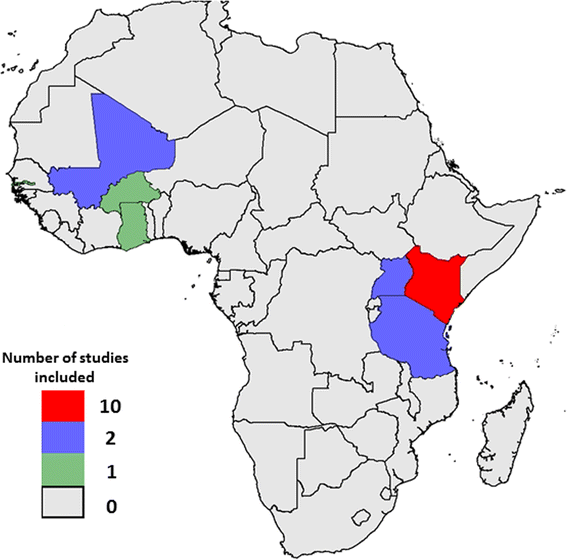Effect of transmission intensity on hotspots and micro-epidemiology of malaria in sub-Saharan Africa
- PMID: 28662646
- PMCID: PMC5492887
- DOI: 10.1186/s12916-017-0887-4
Effect of transmission intensity on hotspots and micro-epidemiology of malaria in sub-Saharan Africa
Abstract
Background: Malaria transmission intensity is heterogeneous, complicating the implementation of malaria control interventions. We provide a description of the spatial micro-epidemiology of symptomatic malaria and asymptomatic parasitaemia in multiple sites.
Methods: We assembled data from 19 studies conducted between 1996 and 2015 in seven countries of sub-Saharan Africa with homestead-level geospatial data. Data from each site were used to quantify spatial autocorrelation and examine the temporal stability of hotspots. Parameters from these analyses were examined to identify trends over varying transmission intensity.
Results: Significant hotspots of malaria transmission were observed in most years and sites. The risk ratios of malaria within hotspots were highest at low malaria positive fractions (MPFs) and decreased with increasing MPF (p < 0.001). However, statistical significance of hotspots was lowest at extremely low and extremely high MPFs, with a peak in statistical significance at an MPF of ~0.3. In four sites with longitudinal data we noted temporal instability and variable negative correlations between MPF and average age of symptomatic malaria across all sites, suggesting varying degrees of temporal stability.
Conclusions: We observed geographical micro-variation in malaria transmission at sites with a variety of transmission intensities across sub-Saharan Africa. Hotspots are marked at lower transmission intensity, but it becomes difficult to show statistical significance when cases are sparse at very low transmission intensity. Given the predictability with which hotspots occur as transmission intensity falls, malaria control programmes should have a low threshold for responding to apparent clustering of cases.
Keywords: Age; Asymptomatic parasitaemia; D function; Hotspots; Malaria; Meta-analysis; Micro-epidemiology; Moran’s I; Stability of hotspots; Sub-Saharan Africa; Symptomatic malaria.
Figures




References
MeSH terms
Grants and funding
LinkOut - more resources
Full Text Sources
Other Literature Sources
Medical
Molecular Biology Databases
Miscellaneous

